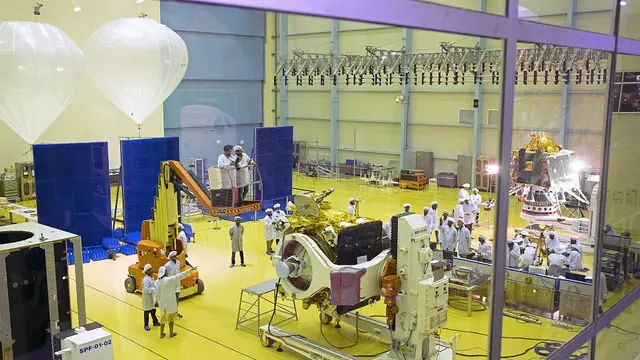India will launch its third mission to the moon in 2020, the Hindustan Times reported on Tuesday.
The newspaper quoted India's junior minister for the department of space Jitendra Singh as saying that third lunar mission Chandrayaan-3 will attempt a soft landing on the moon again.
"Yes, the lander and rover mission will happen in 2020. However, as I have said before, the Chandrayaan-2 mission cannot be called a failure as we have learnt a lot from it," Singh was quoted as saying.
"There is no country in the world that has landed on its first attempt; the United States took several attempts. But we will not need so many attempts."
India's second lunar mission lander Chandrayaan 2 had lost contact shortly before the scheduled attempt to soft-land on the moon on September 7, 2019.
Chandrayaan 2 was launched on July 22 last year from Sriharikota in Andhra Pradesh by Indian Space Research Organisation (ISRO).
If India would have succeeded in its endeavor, it would have become the fourth country to soft-land a spacecraft on the lunar surface after the United States, Russia and China.
Last December, U.S. space agency NASA said its satellite orbiting the moon has found the debris of India's crashed moon lander Chandrayaan 2.
Public enthusiasm towards the moon has been growing.
NASA announced last month that it has completed the giant rocket that will take U.S. astronauts back to the moon, pledging the mission would take place in 2024.
The space agency plans to land on the Moon's south pole in order to exploit its water ice, discovered in 2009, both for life support purposes and to split into hydrogen and oxygen for use as rocket propellant.
In January 2019, China's Chang'e-4 lunar probe touched down on the far side of the moon, becoming the first spacecraft to make a soft-landing on the moon's uncharted side, which is never visible from Earth.
China's current lunar program includes three phases: orbiting, landing, and returning. The first two phases have been accomplished, and the next step is to launch the Chang'e-5 probe to collect 2 kg of moon samples and bring them back to Earth in 2020.
(CGTN)
 简体中文
简体中文





